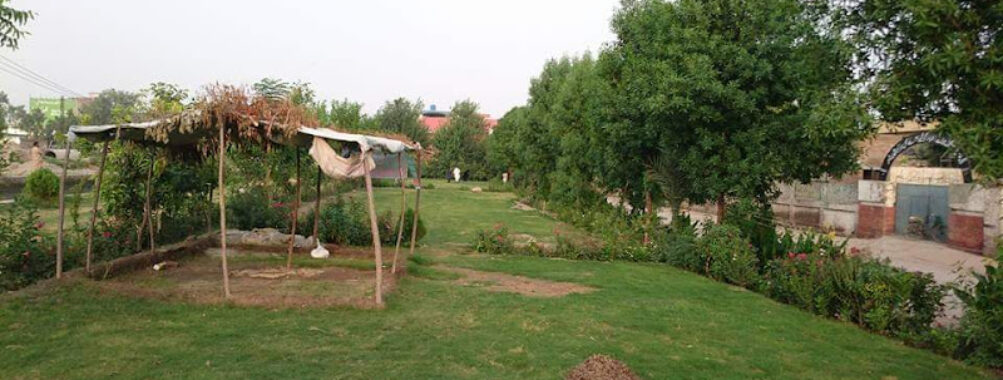
Naqeebi Gulistan, Peshawar city
“`html
Table of Contents
Description
Naqeebi Gulistan in Peshawar is one of those places that quietly wins your heart before you even realize it. It’s not your typical manicured park with fancy fountains and ticket booths. Instead, it’s a community-driven green haven that grew out of sheer passion and perseverance. What used to be a neglected garbage dump (hard to believe now) has been transformed into a thriving garden and nursery thanks to the dedication of Sofi Pir Misal Shah and local volunteers. Over the past few years, this space has become a symbol of what can happen when ordinary people decide to make their city a little more beautiful.
The park’s atmosphere feels personal—almost like walking into someone’s backyard that’s been lovingly tended for years. You’ll find rows of self-grown plants, small shaded corners perfect for sitting with a cup of chai, and the occasional burst of laughter from kids running around. And honestly, that’s what makes it special—it’s not commercialized or overly polished. It’s real, raw, and full of life. Locals often stop by to pick up free plants (yes, free!) as part of a community greening initiative, which gives the place a unique sense of purpose beyond just being a park.
If you’re the kind of traveler who loves discovering places that tell stories of resilience and community spirit, Naqeebi Gulistan will probably stay with you long after you’ve left. It’s not crowded with tourists, which makes it a refreshing break from the usual city bustle. The air feels lighter here, almost like the plants themselves are quietly thanking you for visiting.
Key Features
- Community-built nursery: The park was created entirely through local effort, turning an old dumping ground into a flourishing green space.
- Free plant distribution: Visitors can take home plants for free, promoting environmental awareness and home gardening across Peshawar.
- Wheelchair accessible: The entrance and pathways are designed to accommodate visitors with mobility challenges, making it an inclusive space for all.
- Family-friendly: Safe and open spaces make it an ideal spot for children to play and families to relax together.
- Cultural significance: The site reflects the Naqeebi community’s values of generosity, sustainability, and social responsibility.
- Peaceful environment: Unlike busier parks, Naqeebi Gulistan offers a calm, reflective atmosphere perfect for unwinding or reading under a tree.
- Local events: Occasional plantation drives and awareness campaigns are held here, often supported by local authorities and environmental groups.
Best Time to Visit
Peshawar can get pretty warm in the summer, so the best time to visit Naqeebi Gulistan is between October and March when the weather is cooler and the plants are in full bloom. Early mornings are magical—the light filters through the leaves, and you can hear the city waking up in the distance. If you’re lucky, you might even catch a small community event or a plantation ceremony during this time.
I once visited in mid-February, and the air was crisp with a faint smell of wet soil after the previous night’s drizzle. The volunteers were busy re-potting saplings, and one of them handed me a small aloe vera plant to take home. That simple gesture summed up the spirit of the place for me—it’s all about giving back.
How to Get There
Reaching Naqeebi Gulistan is fairly straightforward if you’re already in Peshawar. It’s located in the Gulbahar area, which is well-connected by local transport. You can easily grab a rickshaw or a Careem ride from almost anywhere in the city. If you prefer public transport, minibuses and wagons frequently pass through Gulbahar, and locals will happily point you in the right direction if you ask.
For those driving, parking is usually available near the entrance, although it can get a bit tight during weekends or community events. The park’s location along the canal makes it easy to spot, and the greenery stands out even from a distance. I’d recommend visiting in the morning to avoid traffic and to enjoy the peaceful start to the day.
Tips for Visiting
Here’s the thing about Naqeebi Gulistan—it’s not a flashy tourist destination, so come with an open mind and a bit of curiosity. Wear comfortable shoes because you’ll probably want to wander around the nursery paths or sit under a tree for a while. And if you’re a plant lover (like me), bring a small bag or box—you might just end up taking home a few saplings.
Carry a reusable water bottle and maybe a snack or two, as there aren’t many food stalls nearby. The park is all about sustainability, so try to avoid leaving any litter behind. If you’re visiting with kids, keep an eye out for the small fish ponds and plant beds—they’ll be fascinated. And for photographers, the soft light in the late afternoon is perfect for capturing the park’s earthy tones and the quiet energy of people working among the plants.
One more thing—don’t rush your visit. Naqeebi Gulistan isn’t the kind of place you “see” and move on from. It’s a spot to slow down, breathe, and maybe have a chat with one of the volunteers who’ll gladly tell you how the park came to life. You’ll leave not just with photos, but with a story worth telling.
In a city that’s constantly growing and changing, Naqeebi Gulistan stands as a reminder that progress doesn’t always mean concrete and steel. Sometimes, it’s as simple as planting a seed and watching it grow. So if you ever find yourself in Peshawar, take a little detour to this green corner—it might just be the most unexpectedly heartwarming part of your trip.
“`
Location
Places to Stay Near Naqeebi Gulistan, Peshawar city
Find and Book a Tour
Explore More Travel Guides
No reviews found! Be the first to review!